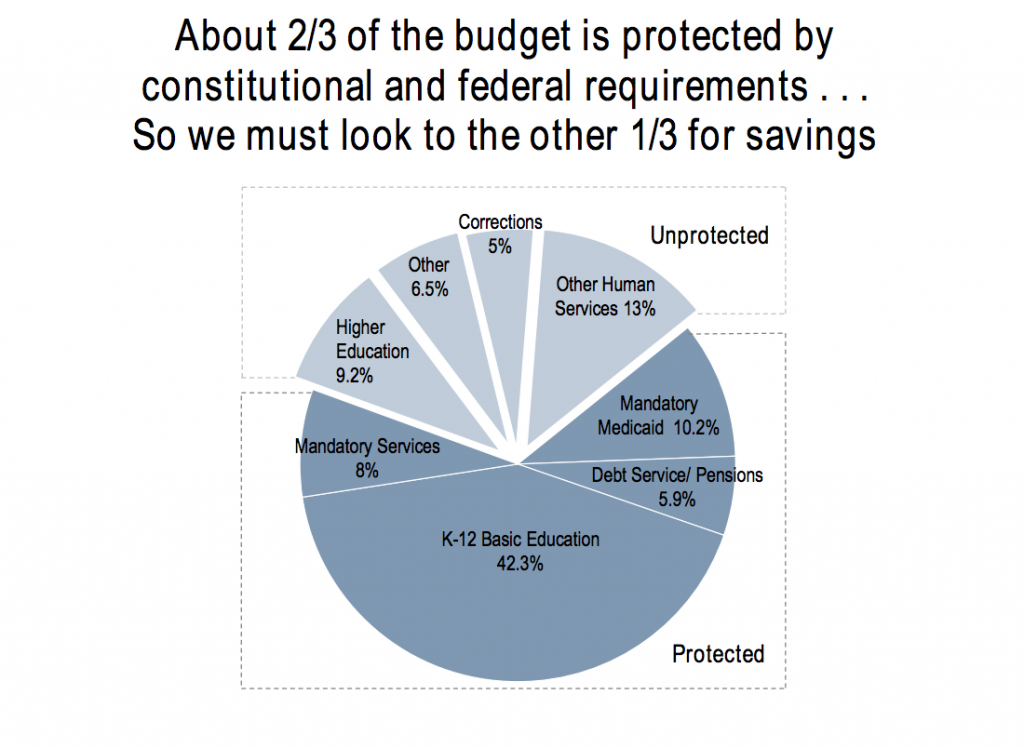We can almost hear the arguments now.
“Olympia has plenty of money to meet our obligations.”
“We have $2.6 billion more in new money from the previous budget cycle, so there’s no need for additional revenue.”
Those statements will be made, especially as we get closer to the legislative session.
Those statements, however, conveniently ignore the other half of the ledger. Yes, budget forecasters predict we’ll have more than $2 billion in additional revenue for the next two-year budget cycle. While this is good news, the added revenue is not enough to cover our obligations.
As the charts below show, just simply continuing existing programs as is – not expanding or creating new programs – we’re looking at almost $1.7 billion in needed revenue.
 As a state, we’ll also have higher pension obligations that will require at least $400 million in additional pension payments. We’ll have to put more into state employee health care (another $308 million) and we have an additional $200 million in debt service obligations.
As a state, we’ll also have higher pension obligations that will require at least $400 million in additional pension payments. We’ll have to put more into state employee health care (another $308 million) and we have an additional $200 million in debt service obligations.
State employees and public school teachers haven’t had a state cost-of-living adjustment in six years. And any hope of continuing the higher education tuition freeze or expanding student financial aid to get more kids into college will require additional state allocations.
All of those obligations easily erase the $2.6 billion in additional revenue that’s expected, and we haven’t even mentioned the roughly $2 billion in new funding required to meet our promise to fully fund our K-12 schools.
Additional revenue is welcome news, but it’s not enough. As a state, we’ll need to be open to thoughtful conversations about other sources of revenue so that we can meet the growing demands of our state – fully funded schools, affordable higher education opportunities, quality treatment for the mentally ill, adequate health coverage for low-income families, and a clean and sustainable environment.
With over 640 corporate tax exemptions on the books, some of them grossly ineffective and costly to taxpayers, that would be a good place to start.
We’ll also need to look at reducing and eliminating current services due to our budget shortfall. But there’s only so many places to cut as the next chart demonstrates.
Here is an excellent guide on the state budget. What specific services would you cut and how much would that save? What revenue options would you like the Legislature to consider in an effort to balance the budget? Leave your comments below or on our Facebook page.
Chart source: Office of Financial Management

